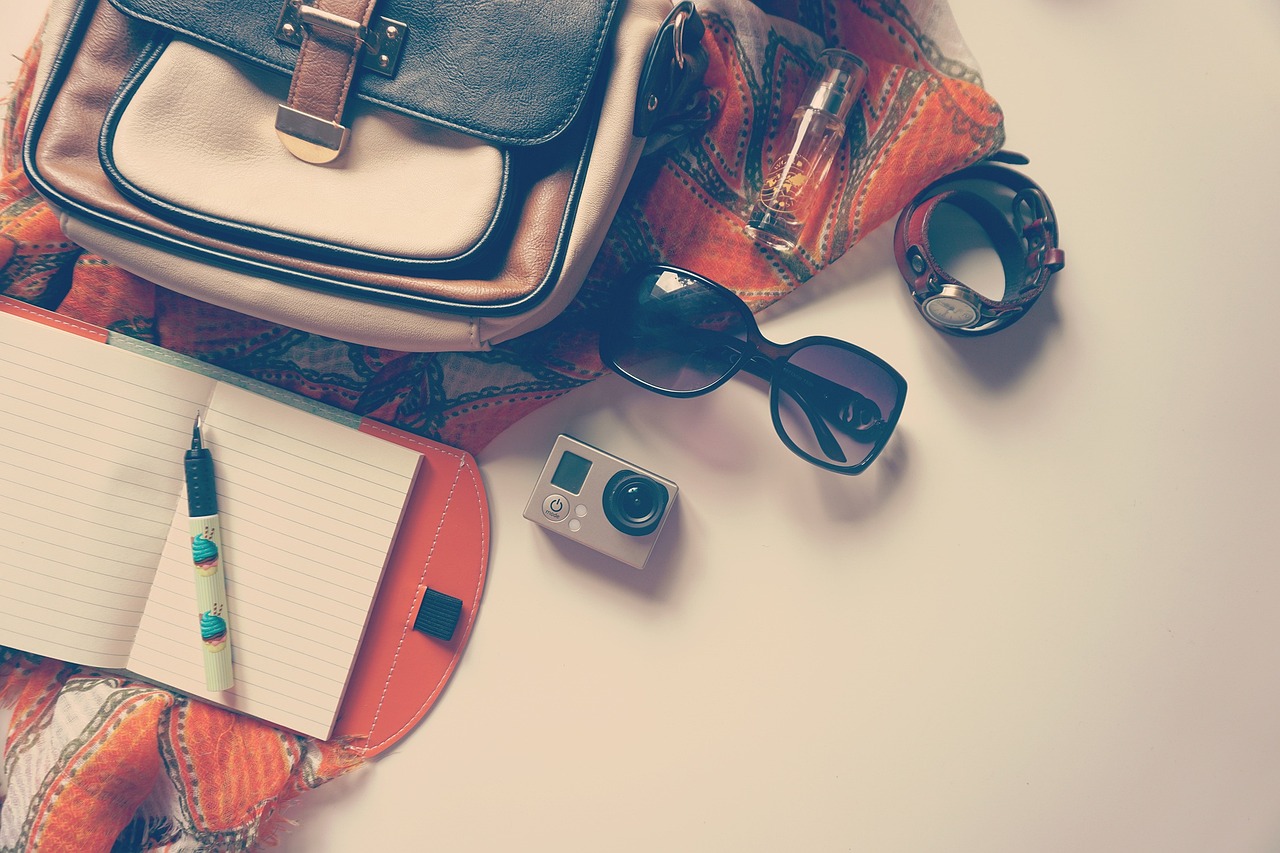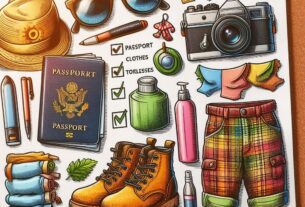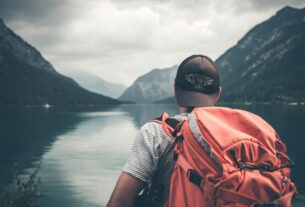Have you ever found yourself struggling with an over-packed suitcase, trying to squeeze it into the overhead bin or lugging it through the streets of a foreign city? Packing light for long trips can seem impossible, but with the right strategies, it can make your travel experience more pleasant and less stressful. In this guide, we’ll cover everything you need to know to pack light for long journeys without sacrificing comfort or necessities.
🌴 Get Your FREE Bahamas Checklist!
Perfect for planning your island escape 🌊
We respect your privacy. Unsubscribe anytime.
Powered by greattravelnews.com
Understanding the Importance of Packing Light
Packing light isn’t just about convenience; it has several benefits that can make your trip more enjoyable and hassle-free.
Reducing Stress and Effort
There’s nothing more frustrating than struggling with heavy luggage. By packing light, you lower your risk of dealing with physical strain, long waits at check-in counters, and the anxiety of misplacing items.
Saving Time and Money
Not only will light packing save you the potential costs of extra baggage fees, but it will also speed up your transit through airports and other transportation hubs. You can skip the wait at baggage claim and move more freely in your destination.
Planning and Preparation
The first step to packing light is proper planning and preparation. This involves creating a plan for what you need, understanding the climate of your destination, and acknowledging any specific activities you’re going to engage in.
Research Your Destination
Know the climate, culture, and terrain of your destination. This will help you choose clothing and other items wisely.
Climate Understanding:
| Destination Type | Suggested Clothing Items |
|---|---|
| Warm Destinations | Light t-shirts, shorts, sundresses |
| Cold Destinations | Base layers, warm sweaters, jackets |
| Rainy Areas | Water-resistant shoes, raincoat, umbrella |
Define Your Activities
Knowing the activities you’re planning on doing can help you decide what to pack. For example, hiking necessitates different gear than beach lounging.
Example List of Activities:
| Activity | Must-Have Items |
|---|---|
| Hiking | Hiking boots, backpack, lightweight jacket |
| Beach outing | Swimsuit, sunscreen, flip-flops |
| City touring | Comfortable walking shoes, casual dress |
Create a Packing List
Before you start throwing items into your bag, create a detailed list of what you think you’ll need. Lists help ensure you don’t forget essentials and can prevent overpacking. Review and refine your list multiple times.
Sample Packing List:
| Category | Items |
|---|---|
| Clothing | 2 pairs of pants, 3 shirts, 1 dress |
| Toiletries | Toothbrush, toothpaste, shampoo, conditioner |
| Technology | Phone, charger, headphones |
| Miscellaneous | Passport, travel documents, book |

Choosing the Right Luggage
Having the right luggage can make a world of difference in your travel experience. For long trips, choosing versatile, lightweight, and durable luggage is crucial.
Types of Luggage
Select the type of luggage that best suits your travel needs:
- Backpacks: Ideal for mobility and hands-free travel. Look for backpacks with multiple compartments and ergonomic designs.
- Suitcases: Preferably with wheels and a sturdy handle, these are great for organized trips. Opt for hard-shell cases for extra protection.
- Duffel Bags: Flexible and easy to squeeze into tight spaces.
Features to Look For
When selecting your luggage, consider the following features:
- Lightweight Material: To avoid adding unnecessary weight.
- Durability: Ensure it can withstand various forms of travel.
- Compartments: For better organization.
- Security Features: Such as locks or anti-theft zippers.
The Art of Clothing Selection
Clothing often takes up the most space in your suitcase. Selecting the right clothing is essential for packing light.
Choose Versatile Clothing
Select clothing items that can serve multiple purposes. Opt for neutral colors that can be easily mixed and matched, and pieces that can be dressed up or down.
Implement the Rule of 3s
The Rule of 3s means packing three items in each category: three shirts, three pairs of underwear, three pairs of socks. This rule is flexible depending on your specific needs and trip length but provides a good starting point.
Example of Rule of 3s:
| Category | Items |
|---|---|
| Tops | 3 Shirts |
| Bottoms | 3 Pairs of Pants or Shorts |
| Underwear | 3 Pairs |
Layering Strategy
Layering not only keeps you warm but also allows you to adapt quickly to changing weather conditions. Lightweight, breathable layers are preferable.
Example Layering:
- Base Layer: Moisture-wicking t-shirt.
- Middle Layer: Light sweater or hoodie.
- Outer Layer: Waterproof jacket.
Packing Tips and Techniques
Packing isn’t just about what you bring; it’s also about how you pack it. Employ efficient packing techniques to make the most of your luggage space.
Roll, Don’t Fold
Rolling clothes instead of folding them can save a significant amount of space and reduce wrinkles.
Use Packing Cubes
Packing cubes help organize your items and compress your clothes to maximize space. They make it easier to find what you need without unpacking everything.
Utilize Every Nook and Cranny
Use shoes and other odd-shaped items to store smaller items like socks, chargers, or toiletries. This technique helps you use all available space efficiently.
Smart Toiletry Packing
Toiletries can be bulky, so packing them wisely is key to saving space and keeping your luggage light.
Use Travel-Sized Containers
Opt for travel-sized toiletries or transfer your favorite products into smaller containers. Most stores have a travel section where you can find miniature versions or empty containers for your needs.
Multipurpose Products
Choose toiletries that serve multiple purposes, like a shampoo and conditioner combo or a moisturizer with SPF.
Managing Technology and Gadgets
Technology is essential for most travelers, but it can also add considerable weight to your luggage. Keep your tech essentials light and minimal.
Essential Gadgets
Prioritize what you truly need. Generally, a smartphone, charger, and perhaps a camera are sufficient for most trips.
Travel Organizers
Cable organizers or tech pouches help keep your gadgets and their accessories organized. This not only saves space but also prevents tangled cords and misplaced items.
Essentials and Miscellaneous Items
Apart from clothing and toiletries, there are various essential items you must consider.
Travel Documents and Money
Protect your passport, visas, travel insurance, and other important documents. A small, secure travel wallet or organizer can be handy for this purpose.
Health and Safety
Pack a small first-aid kit with essentials like plasters, antiseptic wipes, and any prescription medications. Don’t forget face masks and hand sanitizer, especially in times of a global health crisis.
Entertainment
Bring a book, journal, or download content on your smartphone or e-reader. Choose compact and lightweight options for in-flight or downtime entertainment.
Maintaining Minimalism On the Go
Packing light is not a one-time effort. It requires ongoing diligence during your trip.
Washing Clothes
Plan to do laundry during long trips. Many accommodations offer laundry services, or you can bring a small amount of detergent to wash clothes in your sink.
Avoid Souvenirs
If you love bringing back memories from your trips, opt for small, easily packable items like postcards, keychains, or digital photos rather than bulky souvenirs.
Wrapping It Up
Packing light for long trips involves a combination of smart choices, meticulous planning, and the willingness to live with less. By focusing on versatile items, employing efficient packing techniques, and maintaining minimalism, you can significantly enhance your travel experience. Remember the ultimate goal: to enjoy your journey without the burden of heavy, overstuffed luggage.
So, are you ready to put these tips into practice on your next adventure? Embrace the freedom that comes with packing light, and you’ll find yourself enjoying your travels more than ever before. Safe travels!




